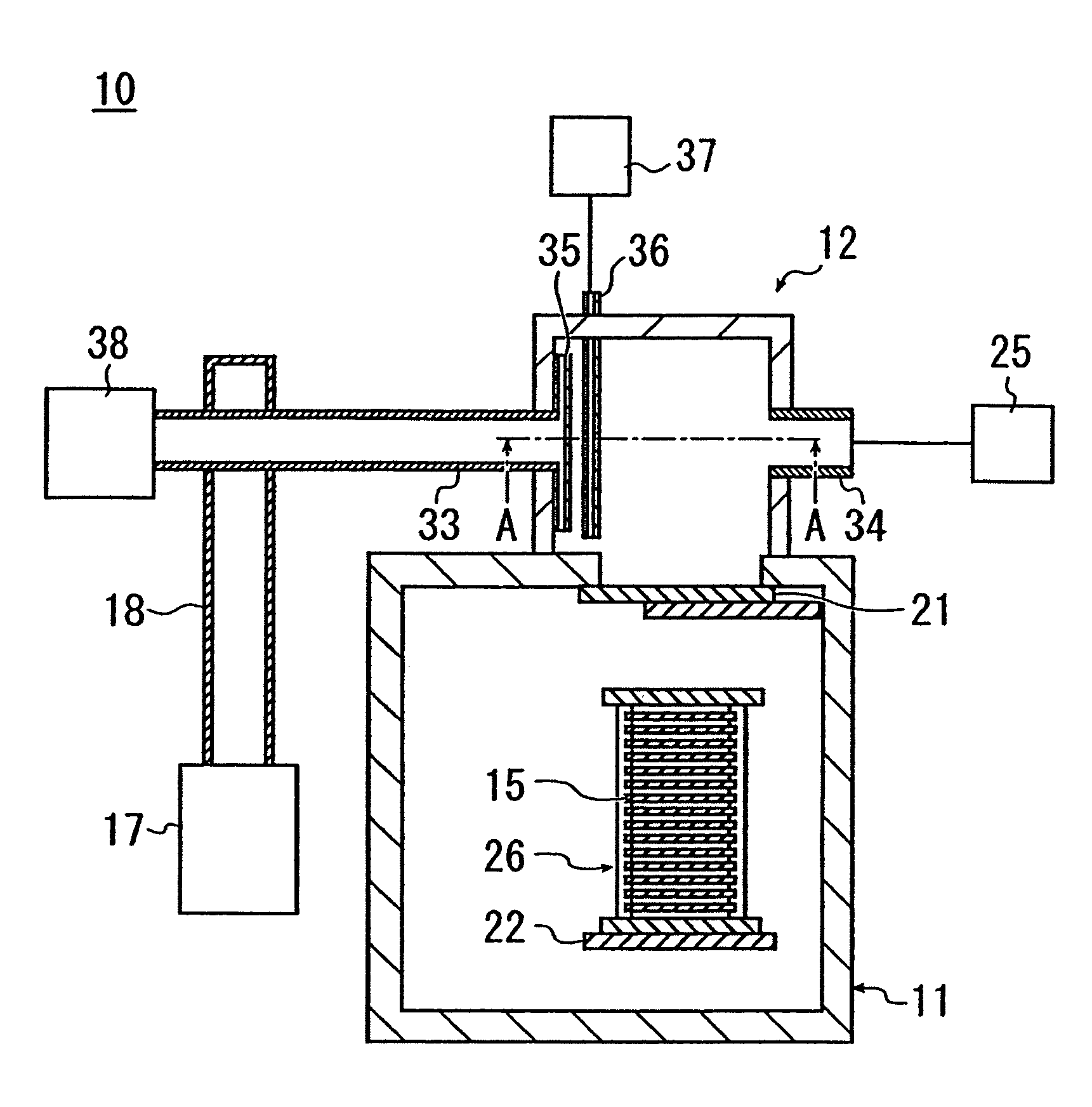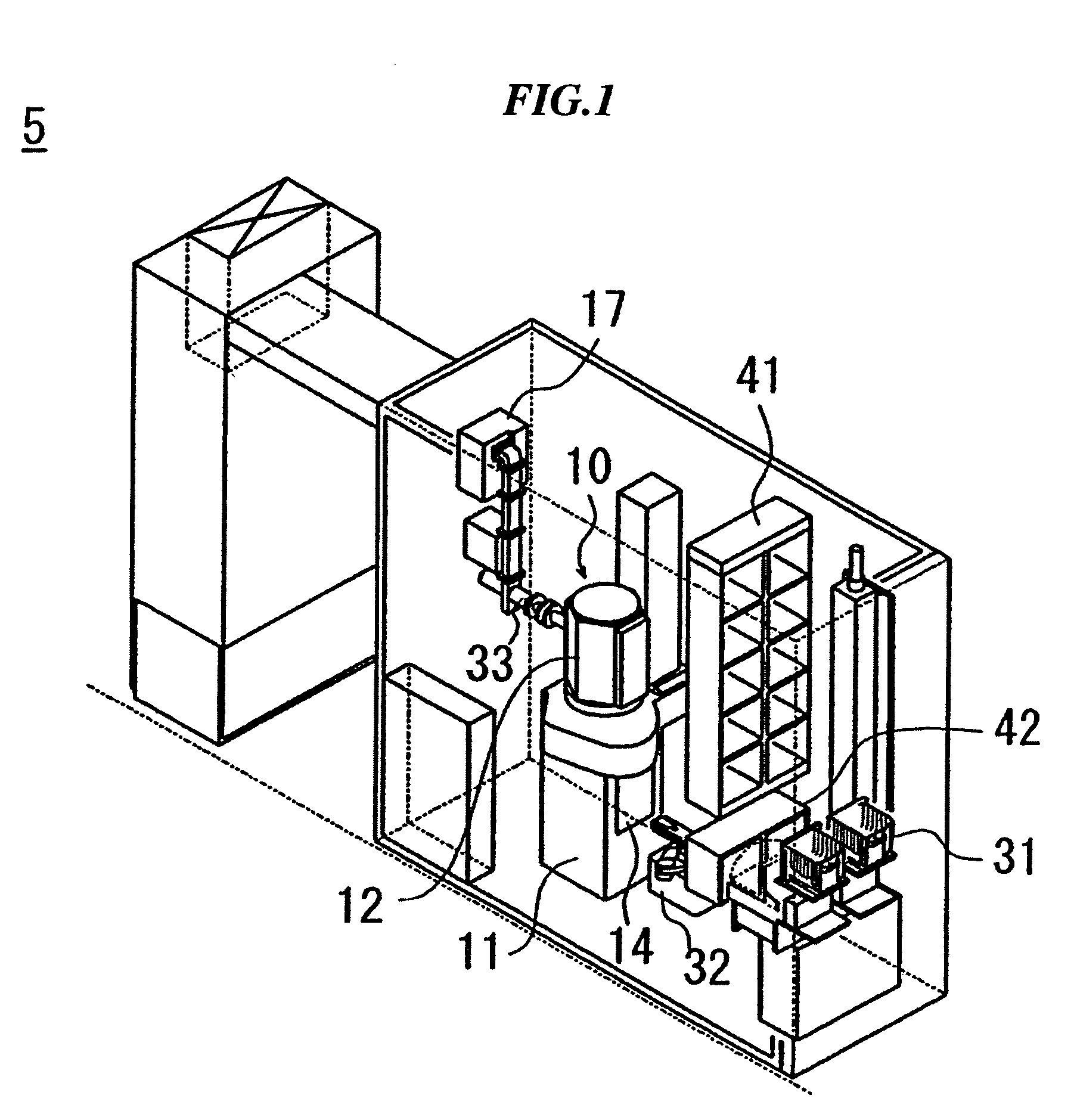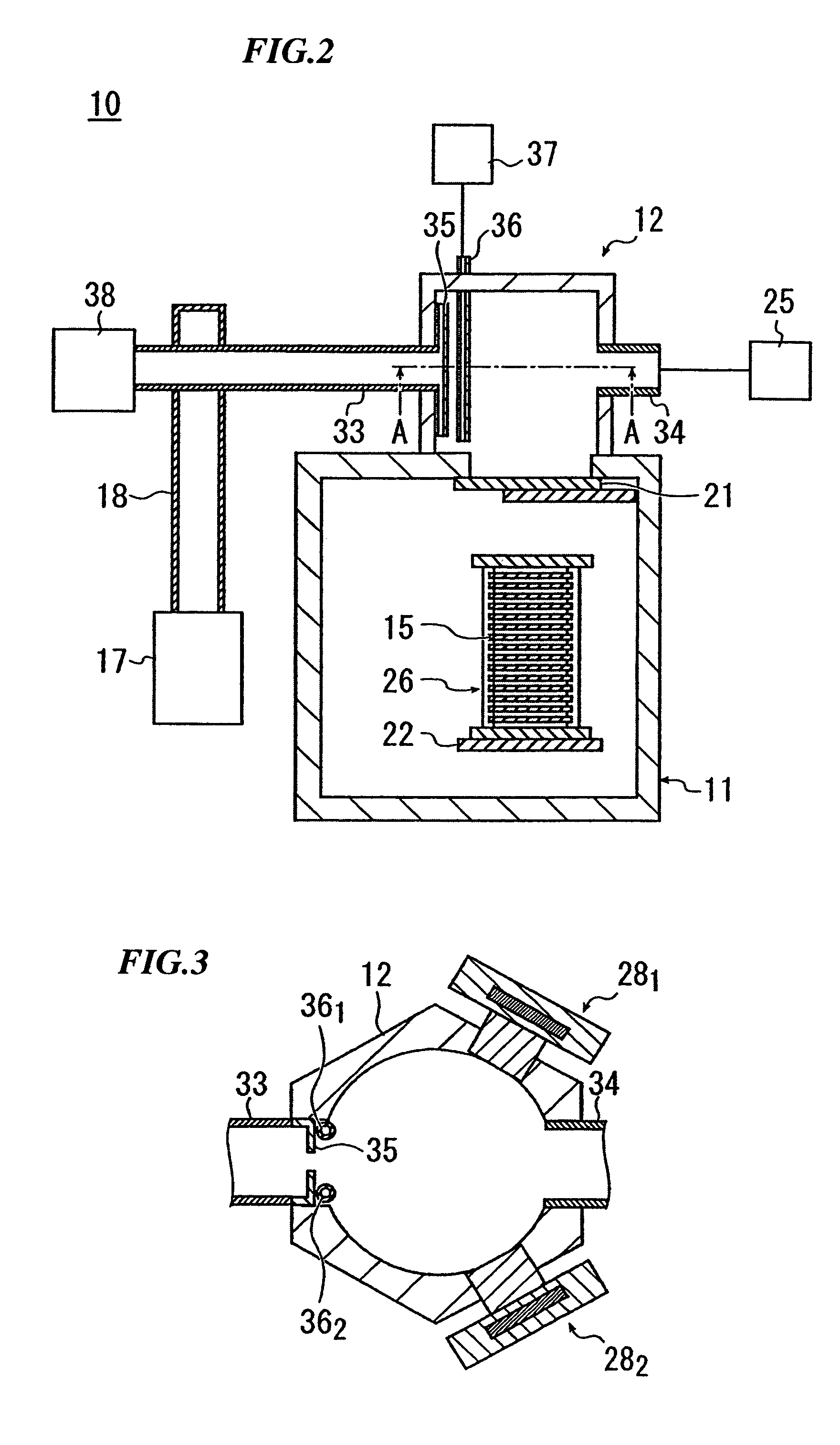Etching method
a technology of etching and substrate surface, applied in the direction of vacuum evaporation coating, heating type, plasma technique, etc., can solve the problem of non-uniform distribution of etching quantity in plane with respect to the surface of the substrate, and achieve the effect of fast etching ra
- Summary
- Abstract
- Description
- Claims
- Application Information
AI Technical Summary
Benefits of technology
Problems solved by technology
Method used
Image
Examples
example
[0074]An example will be described below to explain the effect of the present invention.
[0075]50 pieces of silicon substrates 15 having a diameter of 8 inches were loaded on one boat 26, and subjected to the etching processing under conditions of the pressure before introduction of the etching gas and the pressure at the time of heating each being 4 Pa (0.003 Torr), the pressure at the time of introducing the free radicals being 4×102 Pa (3 Torrs), the adsorption time being one minute, the reaction time being 330 seconds, the flow rate of the etching gas in the adsorbed state and the reacted state each being 4 slm (slm=liter / min at 0° C.), the flow rates of the radical formation gas and the carrier gas in the reacted state being respectively 1.3 slm and 3.9 slm, the heating temperature being 130° C., and the switched on time of the lamp heaters 281 and 282 being 330 seconds.
[0076]In each substrate 15, the film thickness of the silicon oxide film before etching and the film thickness...
PUM
| Property | Measurement | Unit |
|---|---|---|
| pressure | aaaaa | aaaaa |
| pressure | aaaaa | aaaaa |
| pressure | aaaaa | aaaaa |
Abstract
Description
Claims
Application Information
 Login to View More
Login to View More - R&D
- Intellectual Property
- Life Sciences
- Materials
- Tech Scout
- Unparalleled Data Quality
- Higher Quality Content
- 60% Fewer Hallucinations
Browse by: Latest US Patents, China's latest patents, Technical Efficacy Thesaurus, Application Domain, Technology Topic, Popular Technical Reports.
© 2025 PatSnap. All rights reserved.Legal|Privacy policy|Modern Slavery Act Transparency Statement|Sitemap|About US| Contact US: help@patsnap.com



